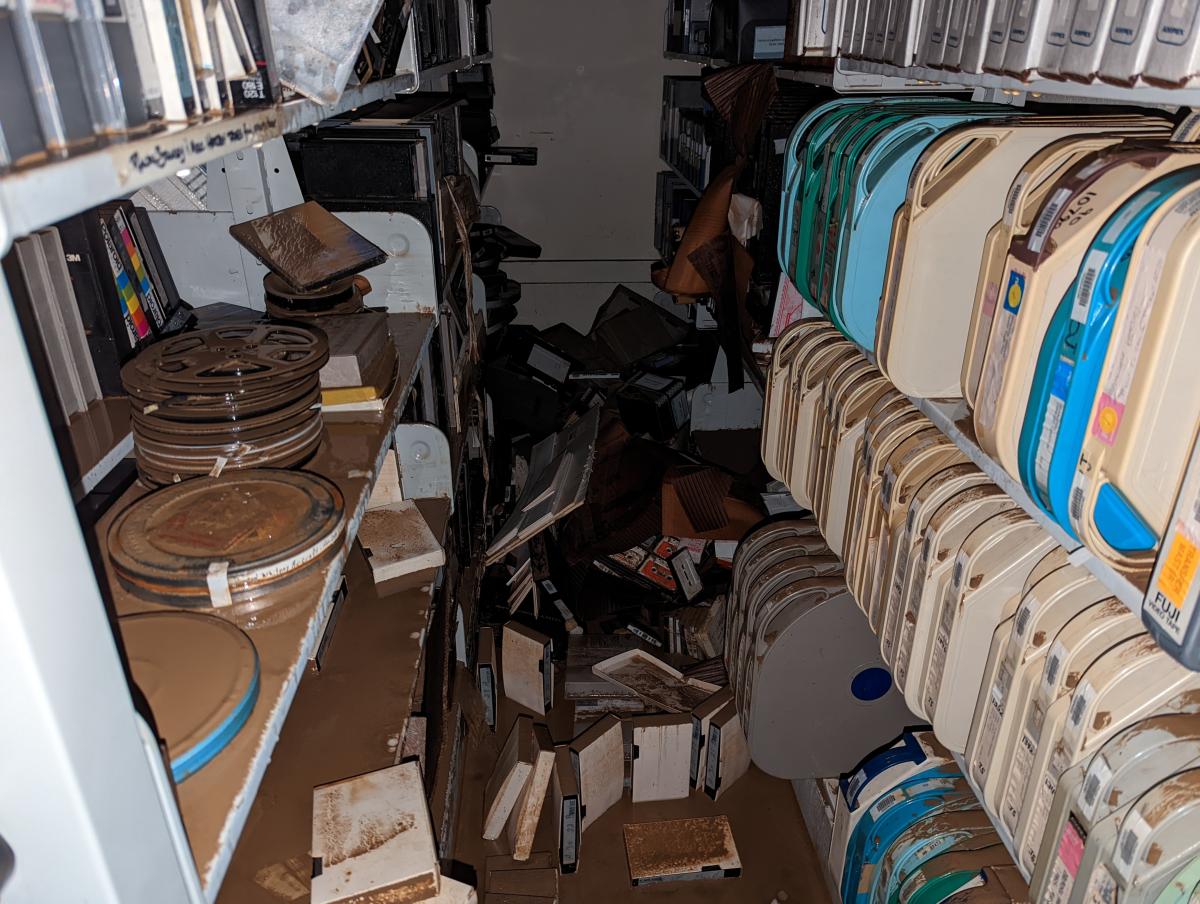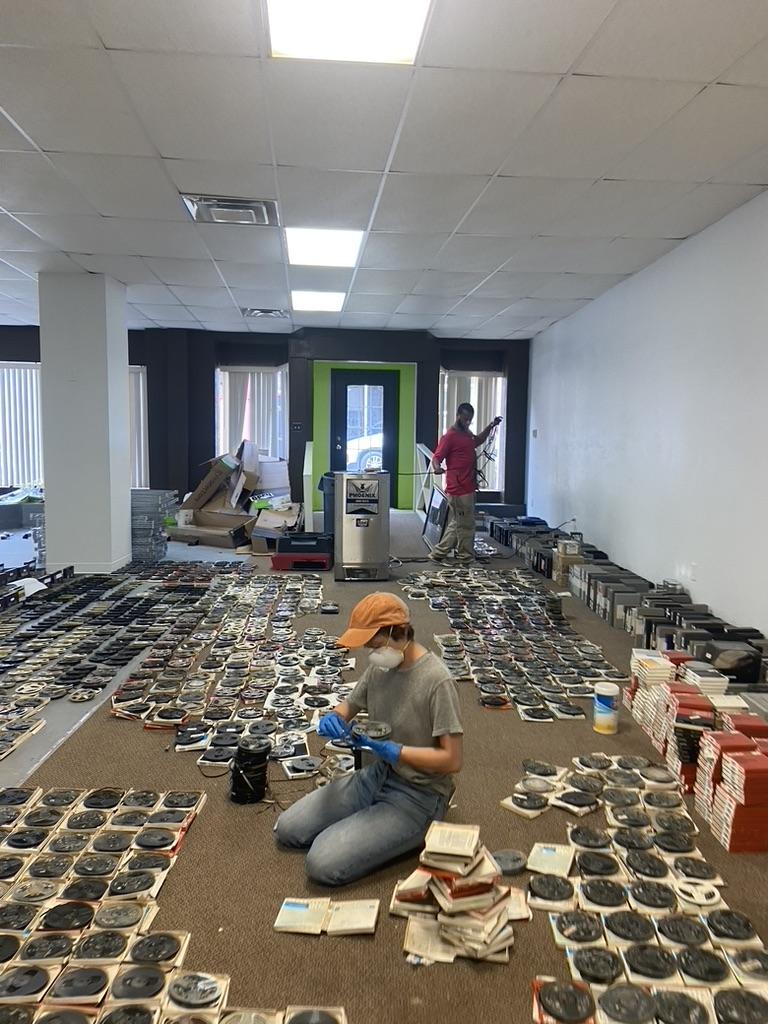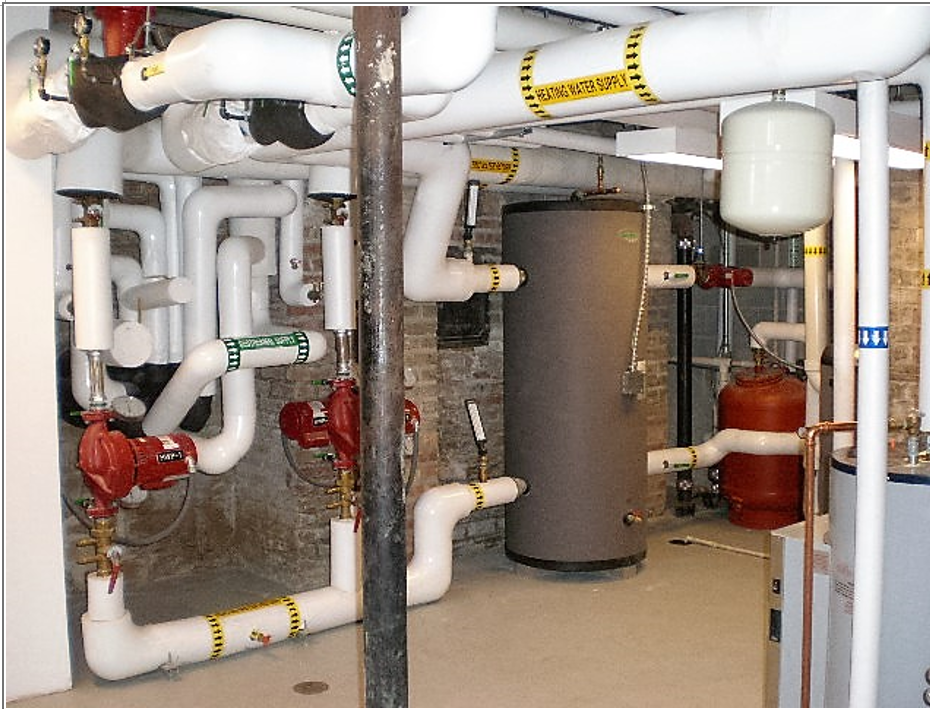Anticipating the Future: Important Steps toward a Strategic Climate Action Plan
Forecasting is tricky business. Trying to guess tomorrow’s weather or stock market swings often is based on looking at past trends. But how do you plan for the future when it looks so wildly different from past precedent? The weather forecast is certainly hazy. In the summer of 2023, U.S. states in the Northeast have been rattled by historic and dangerous floods, states in the South and Southwest have endured record-breaking triple-digit temperatures, and citizens in the Midwest states, often considered “climate havens,” are once again “masking up” as a second wave of unhealthy air quality caused by Canadian wildfires enters the region amidst unprecedented thunderstorms. What does this mean for the future of humanities organizations?
In a recently published report by the Foundation for Advancement in Conservation (FAIC) and the National Endowment for the Humanities (NEH) titled, Held in Trust (2023), experts in the field of cultural heritage conservation and preservation “acknowledge climate change as the most significant threat to the cultural heritage field.” Moreover, many of our cultural institutions are ill-equipped to withstand climate-related disasters such as wildfires, droughts, floods, hurricanes, and blizzards. In July of 2022, Missouri and Kentucky experienced flood disasters that swamped entire communities. Appalshop, a Kentucky-based arts and media organization, lost about $6 million dollars in archival material when the rain flooded their archive, permanently damaging the nation’s largest repository of Appalachian history and culture. In Puerto Rico, less than two months later, Hurricane Fiona exacerbated the damage caused by Hurricane Irma (2017) and Hurricane Maria (2017), which destroyed much of the island’s infrastructure, including libraries, archives, museums, and other cultural institutions.
There are important steps that humanities organizations can take to mitigate their impact on the environment and prepare for the impact of climate change in the future. Here at NEH, we want to provide you with the information necessary so that you can begin to effectively address the changing climate and help everyone thrive.
Here are some starting points with useful examples and tools:
- Mitigation and Adaptation: Know the Difference
One of the primary goals identified in the Held in Trust report is to “Help cultural heritage professionals and institutions to visualize and anticipate climate impacts.” Anticipating climate impacts sounds like you are being asked to do the impossible: predict the future. Sarah Sutton, co-founder and CEO of Environment & Culture Partners, notes that predicting the future does not require any “outside-the-box” thinking. A great first step is to familiarize yourself with the terminology. “Mitigation means minimizing your part in climate change and adaptation means acting to live with climate change.”
A key example of mitigation is using less energy for heating, cooling, and lighting systems, especially if they depend on fossil fuels. Yet Tatiana Ausema, a program officer in the Office of Challenge Programs at NEH states, “You can’t reduce what you can’t measure.” Mitigation involves conducting a proper energy assessment of your organization so you can better understand your organization’s water and electricity usage, waste production, and transportation costs.
Useful Tool: Energy Star Portfolio Manager is a tool for measuring a building’s energy consumption and can also be used to compare energy usage to similar buildings. This is referred to as “benchmarking your building,” which provides information to help identify areas for improvement.
An example of adaptation is finding a different use for the basement, where collections and expensive equipment are usually stored but could be threatened by flooding. Sutton suggests “leaving the bottom two shelves of storage empty of collections, or lifting equipment up on cement pads, or dry proofing the basement. You could also abandon the basement and allow it to become a cistern for the property to help manage water access.”
- Find Out What’s Happening in Your Community
See if a local climate action plan already exists for your city or town. A quick Google search of your city/town plus “climate action plan” can reveal your community’s needs and current responses to climate change. Having a firm understanding of what’s happening in your community can result in your own climate action plan that prioritizes partnerships and identifies local emergency plans along with climate policies. As Sutton reminds us, “A good starting point is shared values. We cannot do this work without partnerships.” Strategic planning efforts rely on partnerships, long-term collaborative solutions that create learning opportunities for everyone involved.
Useful Tools: The National Oceanic and Atmospheric Administration (NOA) and the Federal Emergency Management Agency (FEMA) have excellent websites where you can trace the current and past impact of climate change across regions. They offer resources that include planning guides and climate records that can aid climate resiliency efforts and inform your climate action plan. Another great tool is the CMRA Assessment Tool, which can help you track how climate conditions will change in your location over time and which climate-related disasters are more likely to impact your community.
- Research What Other Organizations Are Doing
Researching what other organizations have done to improve their preservation and conservation efforts is an essential step that can provide a great source of information and inspiration.
After conducting an extensive energy assessment, the Science Museum of Minnesota discovered that they were using an immense amount of electricity to power the building. This electricity was then being pushed outside in the form of heat, thus wasting large sources of heat that could have been reused. Patrick Hamilton, director of Global Change Initiatives at the museum, states, “We committed to an overhaul of our energy system, one centered on two Trane heat-recovery chillers, which, simply put, move energy from one place to another within the building.” Installed in 2014, the chillers make use of excess amounts of heat throughout the museum generated by the usage of electronics and moves it to areas of the building where heat is needed. It is a self-regulating heating system with environmental and financial benefits. In an interview with Innovate, Patrick stated that the museum has reduced its yearly energy usage by 60-75 percent and its average annual savings on heating and cooling are about $300,000.
The Evanston Historical Center, is located in Evanston, Illinois, in the Dawes House, a National Historic Landmark, where former Vice President Charles Gate Dawes lived with his family from 1909 to 1957. In 2012, the center installed the GEO, a ground-source heat pump system made up of sixteen, 300-feet-deep wells that are connected to seven heat pumps within the house, which automatically regulate moisture levels. Prior to the installation, the house relied solely on a radiator system to heat the house during Illinois’s brutal winters. With no cooling system during the warmer months, however, the house and its collections were susceptible to high humidity. The center set out to determine the best choice for air conditioning in the historic landmark without disrupting the house’s infrastructure. According to Kris Hartzell, director of Facilities, Visitor Services, and Collections, “The GEO is all underground, which differentiates it from more visible forms of energy systems like solar. It’s not imposing and is not susceptible to the environment. We are here to maintain the historical accuracy of the house, so something that is not intruding or aesthetically interfering is useful.” Less than a year later, Illinois experienced the third coldest winter on record, suffering a polar vortex. While worried at first that the GEO might not be able to withstand the harsh winter, she states delightedly, “The GEO did not fail once!”
Libraries have also begun to take appropriate steps to best support their communities and build climate resiliency. In 2020, the American Library Association (ALA) launched a pilot program titled Resilient Communities: Libraries Respond to Climate Change. The program provided $1,000 grants to 25 libraries in the U.S. to support climate-related community initiatives. Garfield County Libraries in Colorado was one of them. With the grant, the library provided a variety of programming with some of the most successful being Plant a Seed events and REnew, REstore, READ! Plant a Seed partners with multiple library branches to provide materials and supplies to community members to plant a seed and take it home. Such a program builds knowledge about sustainability practices and the importance of natural resources. REnew, REstore, READ! offers opportunities to engage with and discuss books about climate change and environmental solutions involving community restoration and preservation projects. Check out the American Library Association, and the Society of American Archivists, for more information and resources.
- Familiarize Yourself with Different Funding Opportunities
Once you have acquainted yourself with climate terminology, conducted research to know what’s happening in your community, and created a list of work you admire, you can begin to develop your own climate action plan. At this point, it is important to familiarize yourself with funding opportunities that can assist you with your plan and accompanying projects. Here is a list of opportunities that can offer funding and other resources:
- Federal Funding: NEH’s Climate Smart Humanities Organizations is a federal grant program that offers up to $300,000 in “matching funds for comprehensive organizational assessments that lead to strategic climate action and adaptation plans.” To put it another way, Climate Smart grants support two types of activities: (1) mitigation planning, which focuses on reducing one’s own environmental impact; and (2) adaptation planning, which centers preparation for actual and expected climate change scenarios. With this program, NEH looks to assist humanities organizations with the development of strategic climate smart plans to ensure that we as a field are taking the necessary steps to establish long-term sustainability and climate resiliency. Climate Smart is a part of NEH’s American Tapestry: Weaving Together Past, Present, and Future initiative, which looks to implement funding programs that will allow humanities organizations to effectively address climate change and its impact on cultural heritage. Climate Smart is one of these programs along with the Cultural and Community Resilience Program, which assists community-based projects to reduce the impact of climate change with an emphasis on inclusive methodologies.
- For the visual arts: The Frankenthaler Climate Initiative supports the planning or implementation of energy efficient and clean energy generation projects. The foundation works with cultural institutions of all sizes that prioritize visual arts. Frankenthaler offers three kinds of grants: Scoping, Technical Assistance, and Implementation, making the initiative one of the best places to find funding opportunities as you develop your climate action plan, if you are an eligible arts institution.
- Other private funding sources to keep in mind:
- Nationwide
- Midwest
- Northeast
- South and Southwest
The cultural sector can expect climate-related disasters to become more and more common. While the future may look difficult, the steps that can be taken now are simple. Developing a thorough climate action plan takes some time, but the foundations of our institutions such as community engagement, knowledge sharing, and collaboration, leave us well-positioned to facilitate climate resiliency efforts and configure adaptation plans, all while mitigating our own environmental impact. We hope the steps and resources provided here will prove useful to your organization and community and make anticipating the future a less daunting task. Let’s thrive together.
For more information on the Climate Smart Humanities Organizations grant, please visit our program page. Contact @email with questions.


